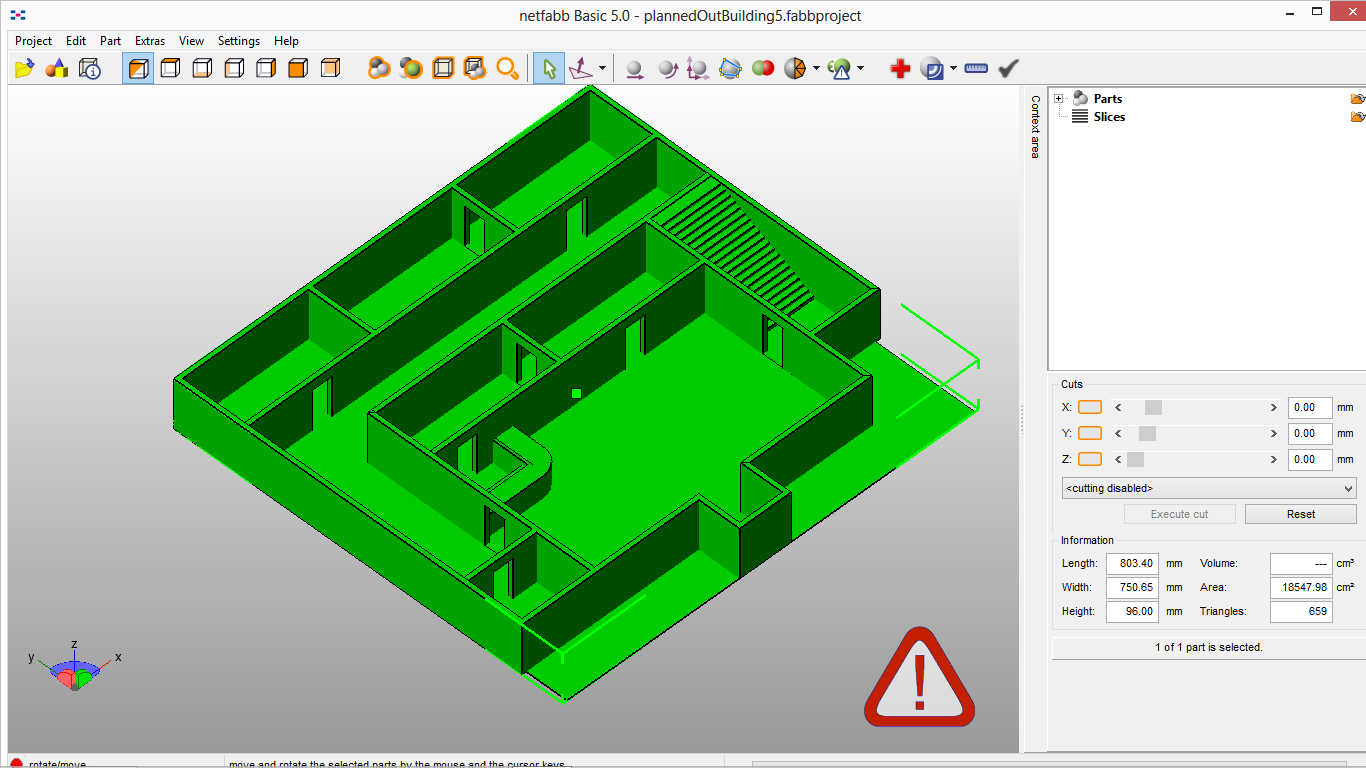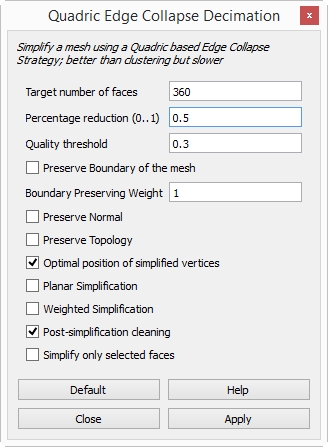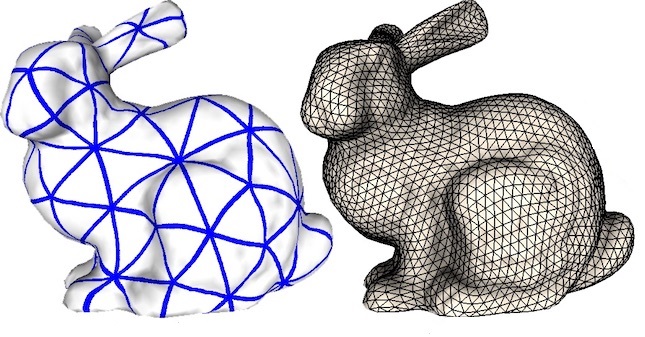

The vertex index is not explicitly written at the start of each line - they are assumed to be in whatever order they are listed in the file (this is pretty common in all 'text' 3D files). A line at the file start declares how many of each there are. This is a simple text format containing lists of numbers - first the vertices (three numbers per line), then edges (indexes of the end vertices), then triangles (three vertex indexes). Compare MeshLab and AutoCAD head-to-head across pricing, user satisfaction.
#Meshlab sketchup free#
You may find the free mesh editor 'MeshLab' useful - this can read and write a huge range of 3D files - many of them are simple text data if you look at them in Notepad, so you can choose whichever gives you the least work to do.Īssuming that you may need to do the editing by hand, the '3D triangulated surface (.GTS)' format looks like a good candidate. I think that whatever file type you export from SU, you're going to need to do some processing on the output. This is certainly possible - I have done something similar here, exporting as OBJ, then using a custom Ruby script to parse out the vertices and faces. I think some of the 3D exports will export faces and this information could be reused I strongly suggest to just add it to your Steam library if you want to keep it up to date.Nyal Mellor wrote:Thanks. We then imported these files one by one into. I’m mainly interested in using it to reduce the complexity of 3D models. These scaled pieces where then exported in SketchUp to a collada file opened in MeshLab and saved as a. In blender you can first import the STL, then merge the vertices at the edge of the bore and cut cube and thus turn the two shells into one neatly, then re-export it as an STL. The system is aimed to help the processing of the typical not-so-small unstructured models arising in 3D scanning, providing a set of tools for editing, cleaning, healing, inspecting, rendering and converting this kind of meshes. When you're done with that check inside the solids for extra faces by hiding the outside faces. Go around the outside of your shape looking for blue, select those faces and right click > reverse faces to turn them white.

To repair the issue, you could load the item into for example MeshMixer, which allows to separate and show the different surfaces (shells) and run a rather good auto-fix.Īnother program that, with a little handiwork could help is blender. If you use the default sketchup colours, the outside of a face is white, the inside is blue.

As a result, Cura sees two non-manifolds and tries to fix each of them - the cylinder with the normals facing inside is considered an artifact that can't be fixed, the holes in the block are stitched and thus turned into a solid block. a block that has 2 holes in opposite surfaces.
#Meshlab sketchup windows#
a cylinder with its normals facing inside and no top and bottom MeshLab is a free open-source program for Windows computers that allows us to edit.SketchUp does not always create STLs in ways that are closed, watertight manifolds - a block with a bore is, if created as a block first and then bored out, actually 2 surfaces if made with SketchUp:


 0 kommentar(er)
0 kommentar(er)
